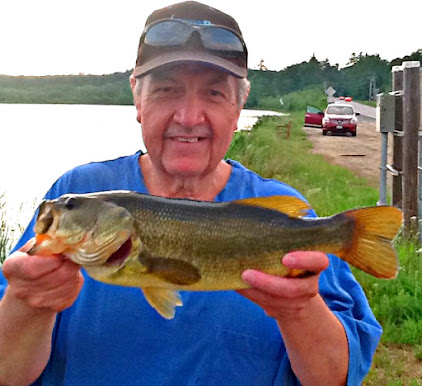One productive technique for targeting bass from the late spring through the fall is fishing long grass lines since bass often seek shelter and use irregularities in the grass line as ambush points.
Following are several valuable tips and strategies to help you find the best spots when fishing long grass lines for bass.
Understanding the Habitat:
Before you venture out to fish along long grass lines, it's crucial to understand the bass's preferred habitat. Bass are notorious ambush predators that hide within the cover of submerged grasses, waiting for unsuspecting prey to pass by. Grass lines serve as natural fish highways, providing shelter, shade, and abundant forage. Familiarize yourself with the types of grass present in your fishing area, such as hydrilla, milfoil, or lily pads, since different grasses may require slightly different presentations.
Identifying Key Features:
It's important to identify key features along the long grass lines that attract bass to increase your catch rate from grass lines. Look for variations in the grass pattern, such as pockets, points, or bends in the line. These irregularities create natural ambush points where bass often congregate. Additionally, keep an eye out for any additional cover, such as fallen trees, stumps, or submerged rocks, as these provide additional hiding spots for bass.
Observe the Surroundings:
When fishing long grass lines, it's crucial to observe the surrounding environment. Pay attention to any signs of baitfish activity, such as jumping or splashing. Bass are often found near their preferred food sources, so if you notice baitfish around the grass lines, it's a good indication that bass are nearby. Also, look for any bird activity, as diving birds can point to the presence of baitfish and feeding bass in that area.
Experiment with Different Lures:
Given the dense cover of long grass lines, selecting the right lures is vital for enticing bass to strike. Consider using weedless lures, such as Texas-rigged soft plastics, spinnerbaits or buzzbaits, as they can be worked through the grass with minimal snagging. Topwater lures, like frogs or weedless poppers, can be particularly effective in drawing strikes when the grass is matted on the surface. Alternatively, you can try using jigs or paddletail swimbaits to mimic prey darting through the grass, triggering a bass's predatory instincts.
Work the Grass Line Methodically:
When fishing along long grass lines, it's essential to work the area methodically to cover as much productive water as possible. Start by casting your lure parallel to the grass line and retrieve it slowly, allowing the bait to imitate a natural movement. If you encounter any irregularities or structure, such as a pocket or a point, focus your efforts on those areas, as they are likely to hold more bass. Gradually move along the grass line, varying your presentation and exploring different depths until you locate active fish.
Take a few minutes asn watch as bass pro Gerald Swindle provides a little insight into his approach to identifying high percentage spots when fishing long grass lines…
















